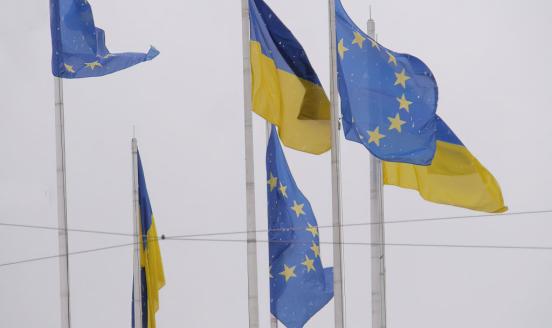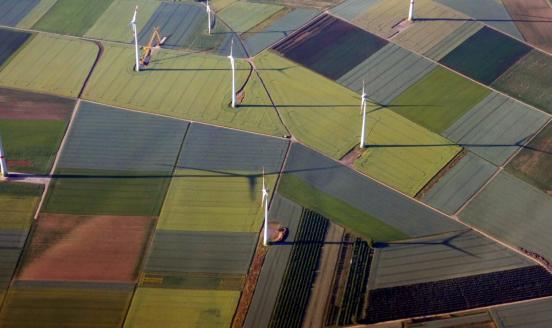The reason for the European Union-Australia trade negotiation hiccup
Though trade talks have fallen through for now, the EU and Australia have long-term common interests in an eventual restart

After more than five of years and 15 rounds of intense negotiations, the European Union and Australia on 29 October decided to suspend talks on a bilateral trade agreement. The negotiations, which had been expected to conclude positively before the end of this year, will probably not reopen before 2025, after the European election of June 2024 and the next Australian general election due sometime the following year.
Why this sudden hiccup in the trade relations between the two partners, which have much in common economically and politically?
Seen from Brussels, Australia is a relatively small partner, which is normal since it is a relatively small economy (one tenth the size of the EU) and very distant geographically. In 2022, it accounted for barely 1.5 percent of the EU’s exports and 0.6 percent of its imports of goods.
Seen from Canberra, the EU is a somewhat bigger partner, ranking fifth among its export destinations (but only 4 percent in terms of value) and second among its import origins (14 percent in terms of value).
Australia already has free-trade agreements with four of its top five partners for exports (China, Japan, South Korea and India) and for imports (China, the United States, South Korea and Japan). Australia also signed a free-trade agreement with the United Kingdom in December 2021, which entered into force in May 2023. It would seem natural, therefore, for Australia to also conclude a trade deal with the EU, which already has many free-trade agreements with countries in the Asia-Pacific region, including Japan, New Zealand, Singapore, South Korea and Vietnam.
Clashing politics
Nevertheless, the failure of the talks was not really surprising. The EU and Australia have a long history of difficult trade relations.
The most longstanding difficulty stems from the stark difference in the EU’s and Australia’s comparative advantages, revealed by the composition of their global goods exports. This shows that agricultural products and raw materials account for almost 85 percent of Australia’s exports, but less than 20 percent of the EU’s exports, while manufactures account for more than 80 percent of the EU’s exports but less than 10 percent of Australia’s exports. In economic terms, this complementary of comparative advantage between Australia and the EU should be a source of economic gains and encourage the two countries to sign a trade deal.
But in political economic terms, the situation is exactly the opposite. Traditionally, the two sides have behaved in a protectionist way in the product categories for which their comparative advantage is relatively low. The average WTO tariff in the EU is 12.2 percent for agricultural goods but only 4.1 percent for non-agricultural products, whereas in Australia it is 10.5 percent for non-agricultural products but only 3.2 percent for agricultural products (WTO ITC UNCTAD, 2023). A trade deal between Australia and the EU would have therefore required each side to dismantle protection for products in relation to which their labour forces risk being displaced by freer trade.
Changed situation
This apparent symmetry in terms of trade protection between the EU and Australia is, however, no longer relevant. This is because, unlike the EU which continues to apply relatively high protection to agricultural products, Australia now applies low tariffs to non-agricultural products (although it retains the option of reverting to higher WTO tariffs). The average applied tariff for non-agricultural products is in fact lower in Australia (2.6 percent) than in the EU (4.1 percent), whereas for agricultural products it remains much higher in the EU (11.4 percent) than in Australia (1.2 percent) (WTO ITC UNCTAD, 2023).
In fact, the issue in relation to agricultural products largely boils down to two specific areas where Australia has a strong comparative advantage. Depending on the year, Australia is the world’s first or second largest exporter of sheep, and the second or third largest exporter of beef, two products where the EU maintains high WTO and applied tariffs. For beef, for instance, the EU’s WTO tariff is 12.8 percent plus €303.40 per 100 kilos, which translates into a 43 percent ad-valorem tariff (Vinci, 2022).
This lack of symmetry implies that a trade deal between the EU and Australia would impose a higher political cost on the EU than Australia, if the two sides dismantled their remaining trade barriers. In other words, while an EU-Australia free-trade agreement was equally difficult for the two sides in the past, when they were both protectionist in some important sectors, is now still politically difficult for the EU, but less so for Australia since it has substantially lowered its protection levels.
Critical materials
Does this asymmetry between the EU and Australia means that in fact the EU is in a strong position relative to Australia because it has the bigger market, while Australia has already opened its own market by largely dismantling its protection in manufactures, the EU’s main area of comparative advantage?
This would be to forget another aspect of the EU-Australia trade talks. The EU has an interest in securing access to Australia’s large reserves of critical raw materials, in particular lithium, of which Australia is the world’s largest producer at the extraction stage. Australia sells most of its lithium to China for processing.
Australia’s strong position in critical raw materials, which the EU needs for its green industrial transformation, is a golden opportunity for the country to prise open the EU market for beef and sheep, which it has long eyed with, until recently, little hope of succeeding. This is probably why the EU baulked at the level of market access for beef and sheep that Australia was seeking to conclude the deal. The EU must also have thought that freer access for Australian agricultural products would pose a problem in its current efforts to conclude a trade deal with Mercosur, the Latin American bloc, which will also involve opening its agricultural market, including for beef.
But ultimately the current hiccup is likely to be just that. The EU has an interest in trading some beef for critical raw materials, and Australia has an interest in depending less on China, its number one export market and source of imports. Once elections are out of the way, expect a resumption of EU-Australia trade talks.
References
Vinci, C. (2022) ‘European Union beef sector, Main features, challenges and prospects’, Briefing, October, European Parliamentary Research Service, available at https://www.europarl.europa.eu/RegData/etudes/BRIE/2022/733676/EPRS_BRI(2022)733676_EN.pdf
WTO ITC UNCTAD (2023) World Tariff Profiles 2023, World Trade Organisation, available at https://www.wto.org/english/res_e/publications_e/world_tariff_profiles23_e.htm



